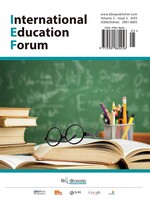Singing Breathing Techniques in 2nd-Grade Primary School Music: A Study Using “The Sea”
Abstract
Under the guidance of the new curriculum standards, teachers should facilitate second-grade students’ music learning by enabling them to engage with and experience music more effectively during class. Singing constitutes a vital component of the curriculum at this academic stage, allowing students to experience the aesthetic value of music through active participation in singing activities. However, when second-grade students perform and sing songs they are more proficient in, they tend to express the music by shouting. When a teacher advises controlling the volume, students may inadvertently breathe too shallowly. This can lead to shorter note durations and a lack of coherence in phrasing, thereby hindering the ability to fully express the music and personally experience its beauty. Therefore, this article selects the piece “The Sea” from the second-grade lower-semester curriculum as an example for analysis. It integrates the teaching of singing respiration into the second-grade music classroom and applies it to this work, thereby enhancing students’ musical aesthetic sensibility and expressive capabilities, enabling a more profound interpretation of the piece, and allowing students to derive joy from their musical experiences.
References
Ministry of Education of the People’s Republic of China, 2022, Compulsory Education Art Curriculum Standards (2022 Edition). Beijing Normal University Press, Beijing.
Devi KR, 2021, Importance of Proper Breathing in Singing. ShodhKosh: Journal of Visual and Performing Arts, 2(2): 67–71. https://doi.org/10.29121/shodhkosh.v2.i2.2021.39
Yang F, 2009, On the Vocalization Principle of Singing. Popular Art, 2009(14): 22–23. https://doi.org/10.20112/j.cnki.issn1007-5828.2009.14.016

